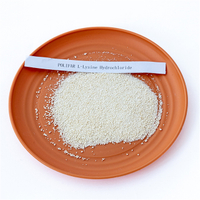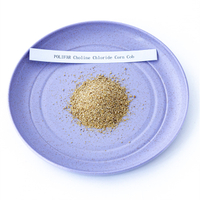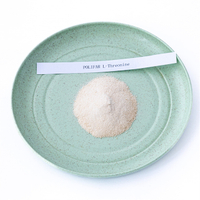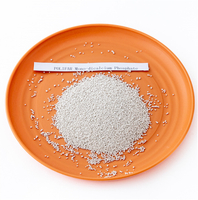| Availability: | |||||||||
|---|---|---|---|---|---|---|---|---|---|
| Color: White or Light yellow Material: corn Sales Models: wholesale Min Order: 1mt Shelf Life: two years when properly stored Packing: net 25kg/50kg/600kg in Plastic woven bags with PE lining Storage: stockpiled at the ventilated place, avoiding rain, moisture and insolation. Please handle with care to prevent bag damage, store away from toxic substances. | |||||||||
Assay/% ≥98.50
POLIFAR
292249
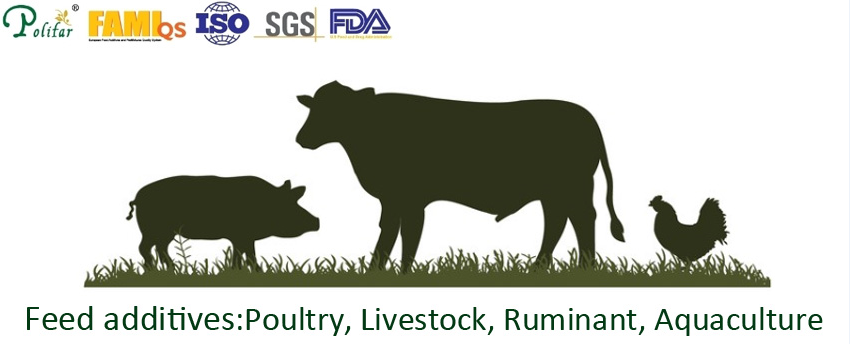
| CAS No.: | 72-18-4 | Other Names: | feed grade L-valine |
| Molecular formula: | C5H11NO2 | EINECS No.: | 200-773-6 |
| Place of Origin: | China | Type: | Feed grade amino acid |
| Efficacy: | promote growth | Brand Name: | Polifar |
| Model Number: | Feed additives | Appearance: | White powder |
| Shelf Life: | 2 years | MOQ: | 1000kg |
| Sample: | Free,≤500g |
【Product performance】:
L-Valine is an essential and indispensable nutrient for pigs and poultry like lysine, theonine, methionine and tryptophan. In practical European formulas, it is usually considered as the fifth limiting amino acid. As it cannot be synthesized in the body, it needs supplementation from the diets. Besides, valine can improve the feed conversation rate and amino acid efficacy

| CAS No.: | 72-18-4 | Other Names: | feed grade L-valine |
| Molecular formula: | C5H11NO2 | EINECS No.: | 200-773-6 |
| Place of Origin: | China | Type: | Feed grade amino acid |
| Efficacy: | promote growth | Brand Name: | Polifar |
| Model Number: | Feed additives | Appearance: | White powder |
| Shelf Life: | 2 years | MOQ: | 1000kg |
| Sample: | Free,≤500g |
【Product performance】:
L-Valine is an essential and indispensable nutrient for pigs and poultry like lysine, theonine, methionine and tryptophan. In practical European formulas, it is usually considered as the fifth limiting amino acid. As it cannot be synthesized in the body, it needs supplementation from the diets. Besides, valine can improve the feed conversation rate and amino acid efficacy
Testing Item | Standard | Result |
Appearance | White crystals or crystalline powder | conforms |
Assay/% | ≥98.50 | 99.60 |
Specific Rotation | +26.6°~+28.8° | +27.4° |
Light Transmittance | ≥94 | 97.1 |
Residue on Ignition/% | ≤0.10 | 0.08 |
Chloride (Cl)/% | ≤0.05 | 0.018 |
Iron (Fe)/% | ≤0.0030 | 0.0008 |
Sulfate ( SO4)/% | ≤0.03 | 0.015 |
Heavy Metal(Pb)/% | ≤0.0015 | 0.0008 |
Loose Bulk Density(g/ml) | / | 0.40 |
Bulk Density(g/ml) | / | 0.69 |
Total Plate Count(cfu/g) | ≤2000 | 170 |
Size(80mesh pass rate)/% | / | 90 |
Loss on Drying/% | ≤0.30 | 0.17 |
PH | 5.5~7.0 | conforms |
Testing Item | Standard | Result |
Appearance | White crystals or crystalline powder | conforms |
Assay/% | ≥98.50 | 99.60 |
Specific Rotation | +26.6°~+28.8° | +27.4° |
Light Transmittance | ≥94 | 97.1 |
Residue on Ignition/% | ≤0.10 | 0.08 |
Chloride (Cl)/% | ≤0.05 | 0.018 |
Iron (Fe)/% | ≤0.0030 | 0.0008 |
Sulfate ( SO4)/% | ≤0.03 | 0.015 |
Heavy Metal(Pb)/% | ≤0.0015 | 0.0008 |
Loose Bulk Density(g/ml) | / | 0.40 |
Bulk Density(g/ml) | / | 0.69 |
Total Plate Count(cfu/g) | ≤2000 | 170 |
Size(80mesh pass rate)/% | / | 90 |
Loss on Drying/% | ≤0.30 | 0.17 |
PH | 5.5~7.0 | conforms |
| Product Storage: | Stockpiled at the ventilated place, avoiding rain, moisture and insolation. Please handle with care to prevent bag damage, store away from toxic substances. |
| Product Packaging: | Net 25kg/drum or 25kg/bag |
| Loading: | 11.25MT/20FCL' ;9MT/20FCL' with pallets |
| Delivery: | About 1 - 2 week |
| Product Storage: | Stockpiled at the ventilated place, avoiding rain, moisture and insolation. Please handle with care to prevent bag damage, store away from toxic substances. |
| Product Packaging: | Net 25kg/drum or 25kg/bag |
| Loading: | 11.25MT/20FCL' ;9MT/20FCL' with pallets |
| Delivery: | About 1 - 2 week |
Q1: What is feed grade L-Valine?
A1: Feed grade L-valine is a specific form of the essential amino acid L-valine that is produced and formulated for use as an additive in animal feed. L-valine is one of the branched-chain amino acids (BCAAs) that cannot be synthesized by animals in sufficient quantities and must be obtained from the diet. Feed grade L-Valine is typically manufactured through fermentation or chemical synthesis processes to ensure its purity and quality meet the requirements for animal nutrition. It is commonly available as a powder or granule and is added to animal feed formulations to supplement and balance the amino acid profile, particularly in diets where the natural sources of L-Valine may be insufficient to meet the animals' requirements.
Q2: What is the L-Valine feed grade used for?
A2: L-valine feed grade is used in animal nutrition to support protein synthesis, growth, and overall performance in animals. As an essential amino acid, L-valine plays critical roles in protein metabolism, muscle development, and energy production. Supplementing animal feed with L-valine helps to ensure that animals receive an adequate supply of this essential amino acid, particularly in diets where natural sources may be limited. L-valine feed grade is commonly used in diets for various livestock species, including poultry, swine, and ruminants, to optimize protein utilization, improve growth rates, enhance muscle development, and support overall health and performance.
Q1: What is feed grade L-Valine?
A1: Feed grade L-valine is a specific form of the essential amino acid L-valine that is produced and formulated for use as an additive in animal feed. L-valine is one of the branched-chain amino acids (BCAAs) that cannot be synthesized by animals in sufficient quantities and must be obtained from the diet. Feed grade L-Valine is typically manufactured through fermentation or chemical synthesis processes to ensure its purity and quality meet the requirements for animal nutrition. It is commonly available as a powder or granule and is added to animal feed formulations to supplement and balance the amino acid profile, particularly in diets where the natural sources of L-Valine may be insufficient to meet the animals' requirements.
Q2: What is the L-Valine feed grade used for?
A2: L-valine feed grade is used in animal nutrition to support protein synthesis, growth, and overall performance in animals. As an essential amino acid, L-valine plays critical roles in protein metabolism, muscle development, and energy production. Supplementing animal feed with L-valine helps to ensure that animals receive an adequate supply of this essential amino acid, particularly in diets where natural sources may be limited. L-valine feed grade is commonly used in diets for various livestock species, including poultry, swine, and ruminants, to optimize protein utilization, improve growth rates, enhance muscle development, and support overall health and performance.





